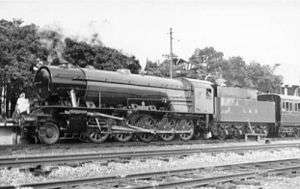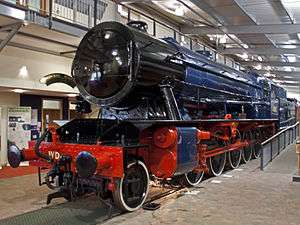LMR 600 ''Gordon''
| Longmoor Military Railway 600 Gordon | |||||||||||||||||||||
|---|---|---|---|---|---|---|---|---|---|---|---|---|---|---|---|---|---|---|---|---|---|
 Gordon on the Longmoor Military Railway, 1949 | |||||||||||||||||||||
| |||||||||||||||||||||
| |||||||||||||||||||||
| |||||||||||||||||||||

Longmoor Military Railway number 600 Gordon is a preserved British steam locomotive. It was built during World War II to the War Department "Austerity" 2-10-0 design by the North British Locomotive Co. at its Hyde Park Works in Glasgow in 1943, and was the last steam locomotive owned by the British Army.[1] The middle driving wheels of the class have no flange, to ease turning on tighter tracks. Number 600 was only the second engine to emerge from a class that eventually numbered 150 engines.
Naming
The Locomotive was named in honour of the Royal Engineers' most famous General, Charles Gordon ("Gordon of Khartoum").
Post-war service
After the war it was used by the Royal Engineers on the Longmoor Military Railway in Hampshire, UK. When the LMR closed in 1969 it was preserved on the Severn Valley Railway, arriving there in 1972 and operating on and from 29 July of that year.[1] In May 1980 it took part in the Locomotive Parade at Rocket 150, the 150th Anniversary of the opening of the Liverpool and Manchester Railway at Rainhill. Gordon also served as Gordon the Big Engine from Thomas the Tank Engine & Friends as part of SVR's former Day out with Thomas events. It was withdrawn from service in 1999 after suffering damage to the firebox.[2]
Current status
Gordon was given a cosmetic repaint and was one of the first locomotives placed in The Engine House museum adjoining Highley in March 2008. On 25 July 2008 the locomotive was formally handed-over by the Army to the Severn Valley Railway, who had been looking after it in a caretaker capacity.[3] As of 2018 it is still awaiting an overhaul.
References
External links
| Wikimedia Commons has media related to WD Austerity 2-10-0 600 Gordon. |